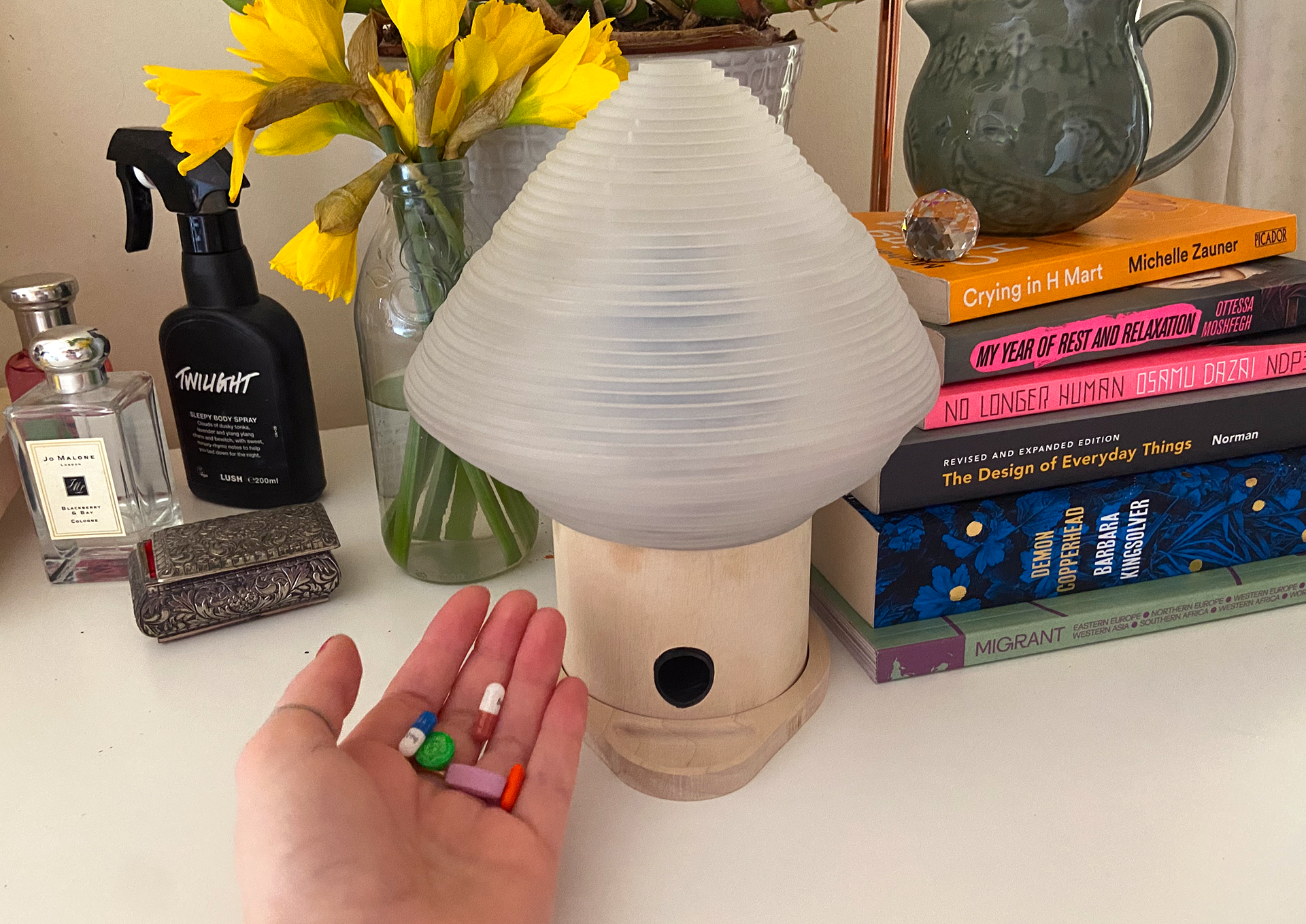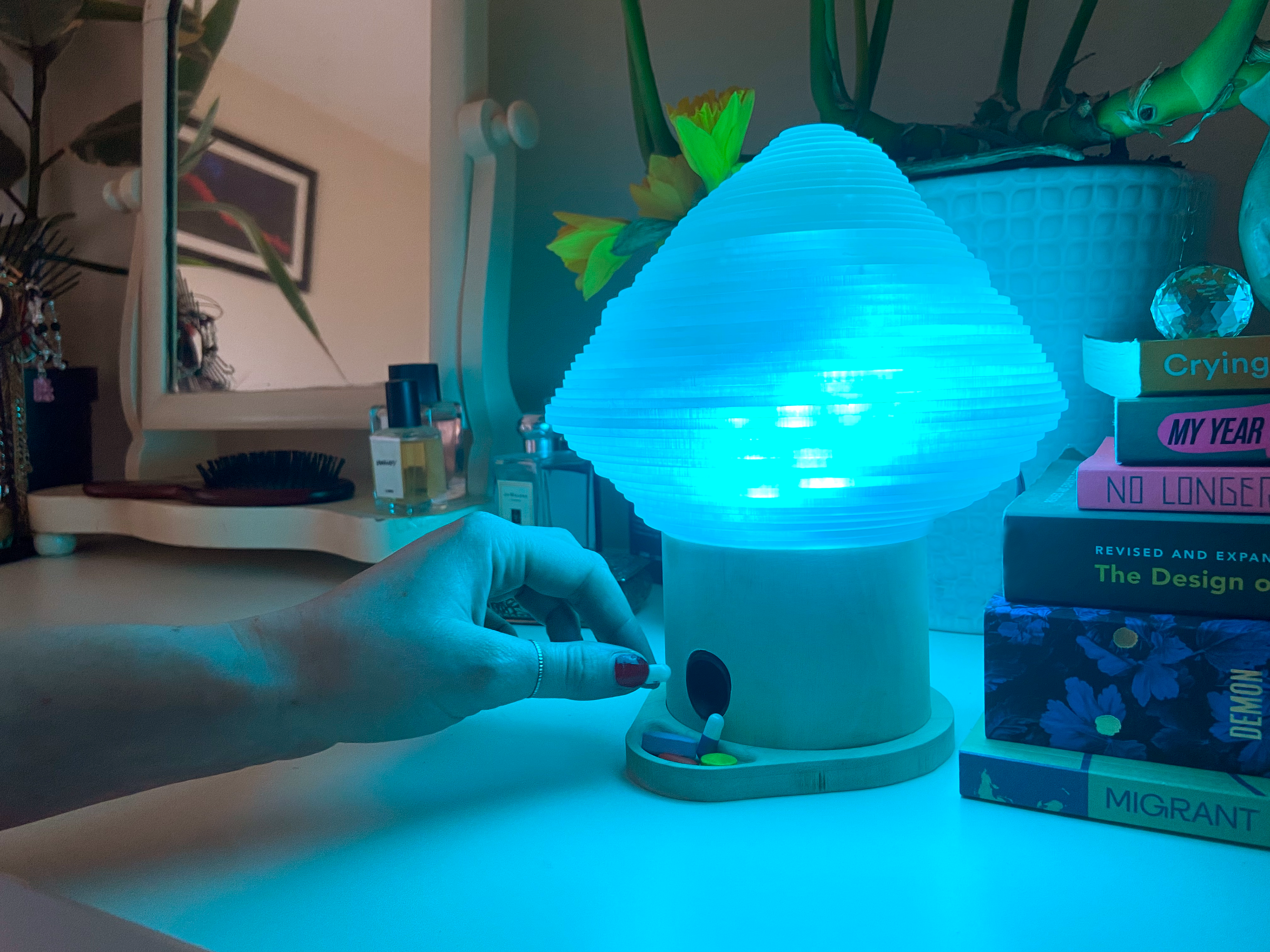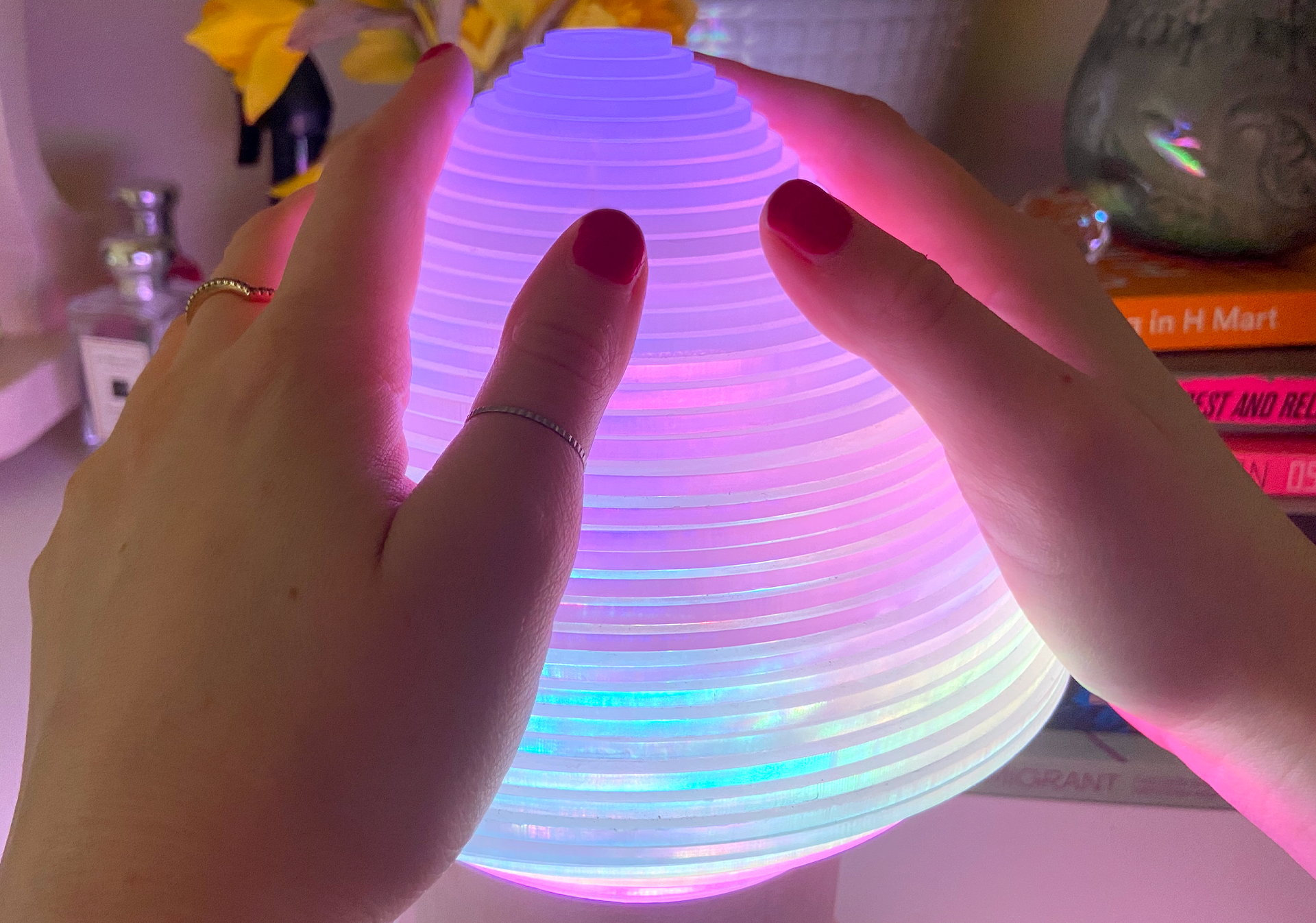Pillín is a beautiful object which engages the senses using touch, light and sound to turn the habit of taking medication into a ritual of self care.
Project Goals: This project focused on physical making and prototyping skills, as well as learning to code with Arduino, all centered around the theme of "Rituals".
Roles: This project was completed as part of a team with Fiona Natoff over 4 weeks.
Research - Photo Study, Survey and Body Storming.
To begin our research into the "Ritual of Medication", we asked friends and family to show us how they store their medication.
We also put out a survey with over 50 responses. We asked people what medication they take, how many times a day, and how they feel about their medication. We then analysed and organised these responses on a post it board.
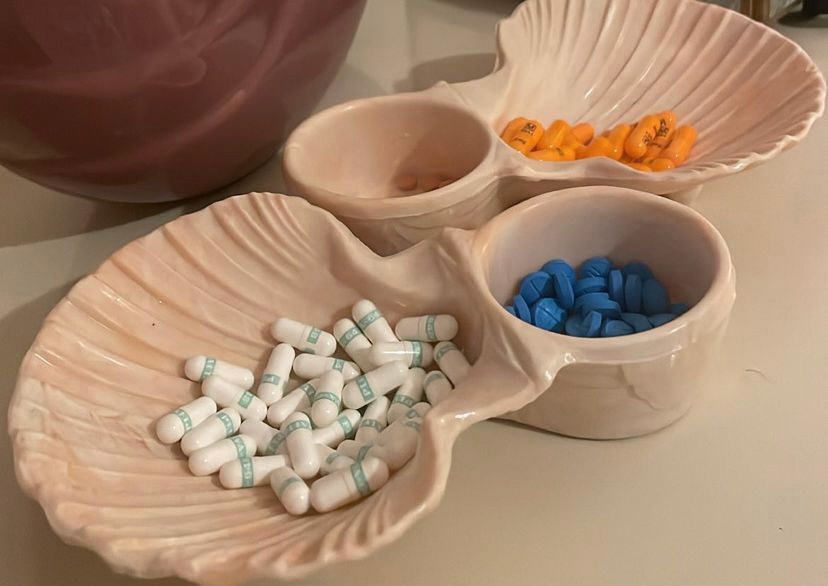

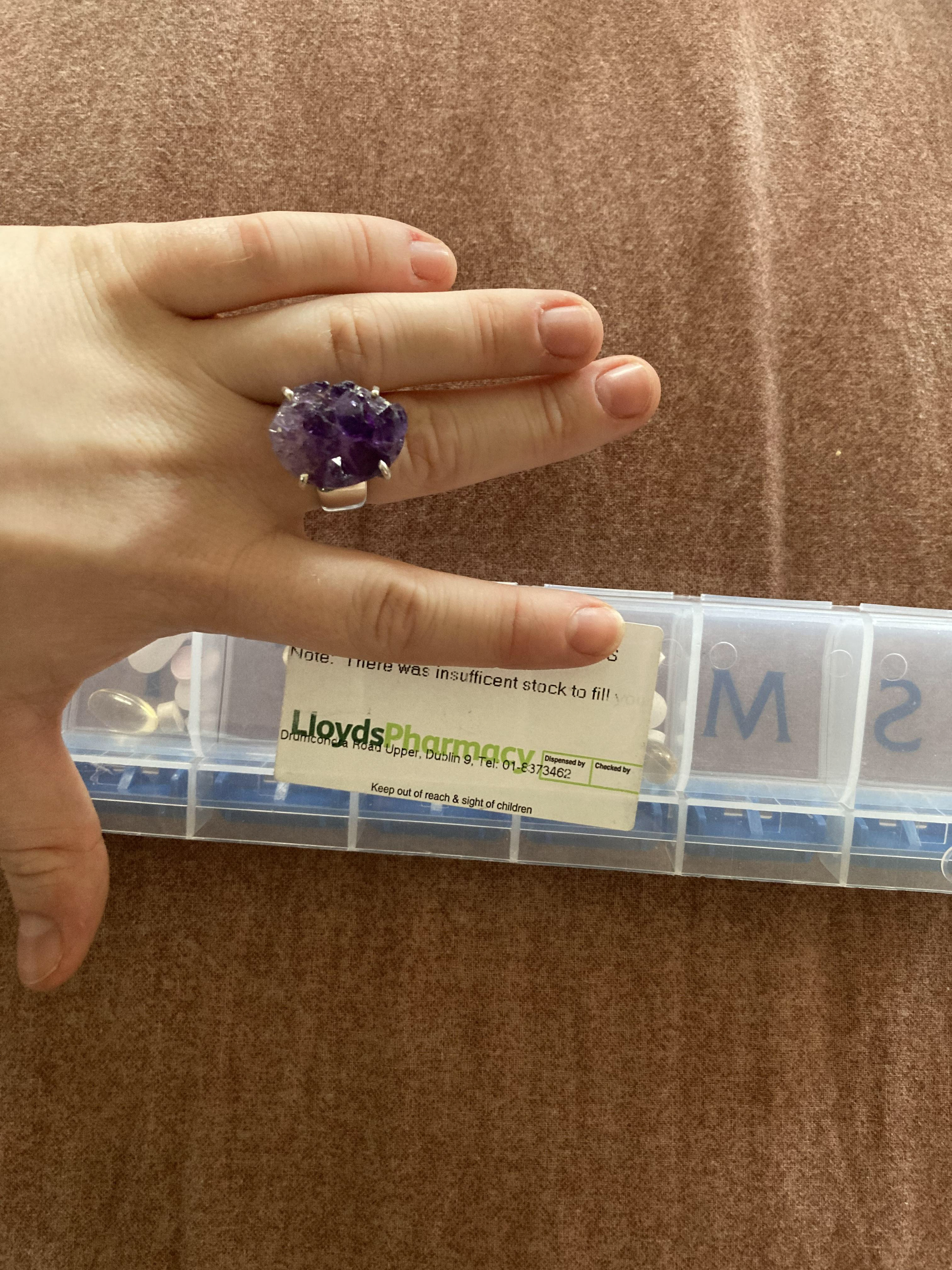
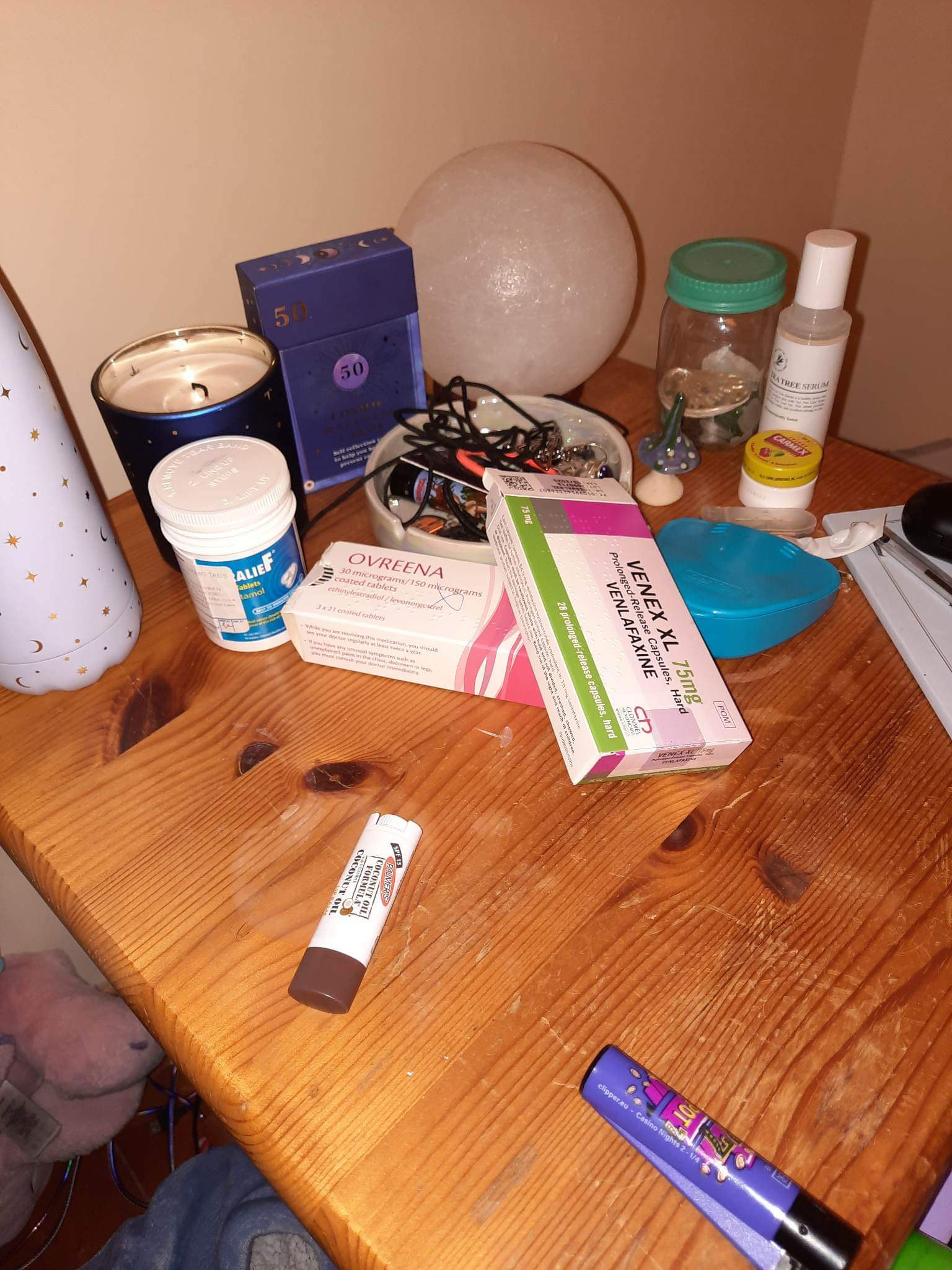
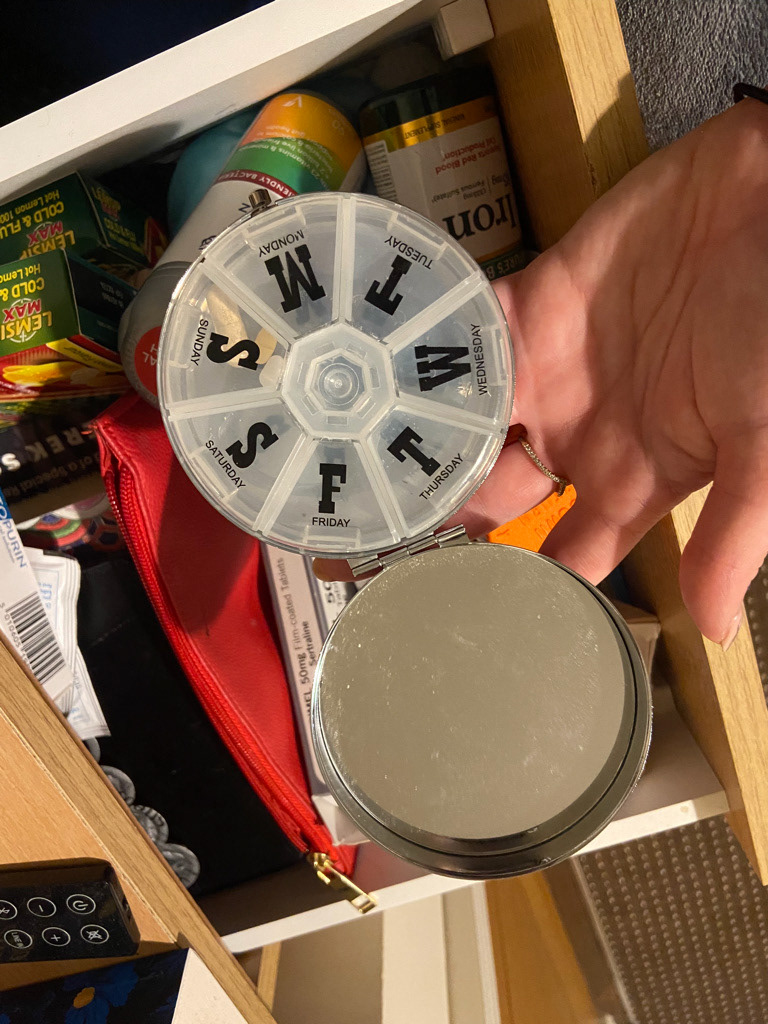
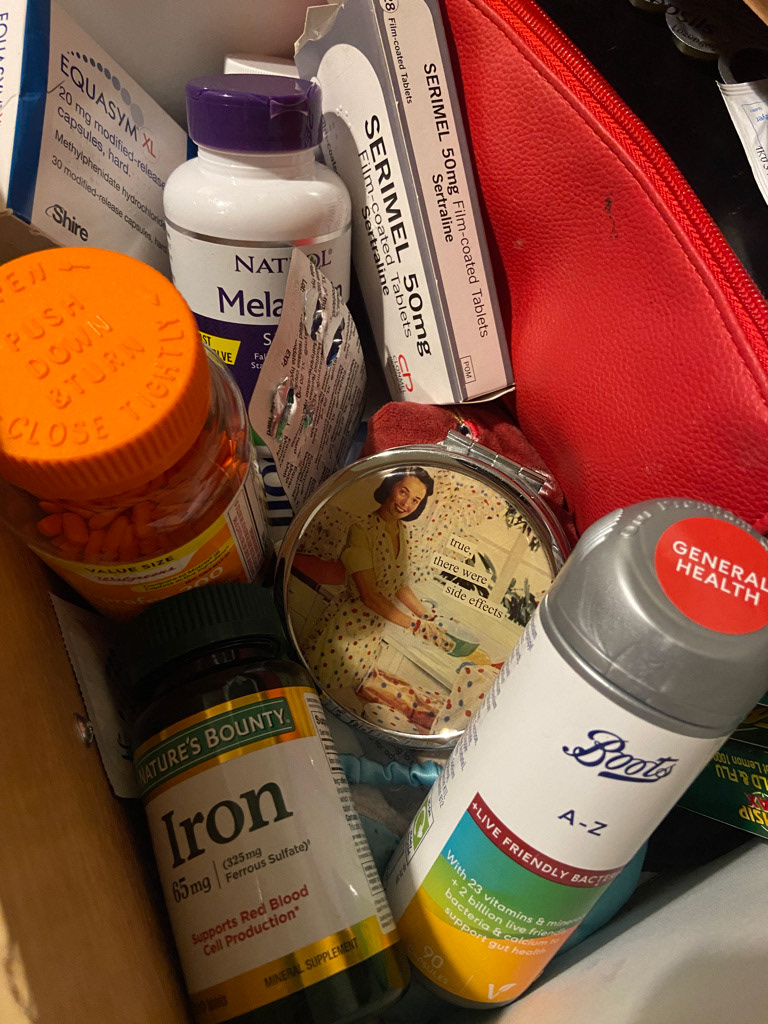
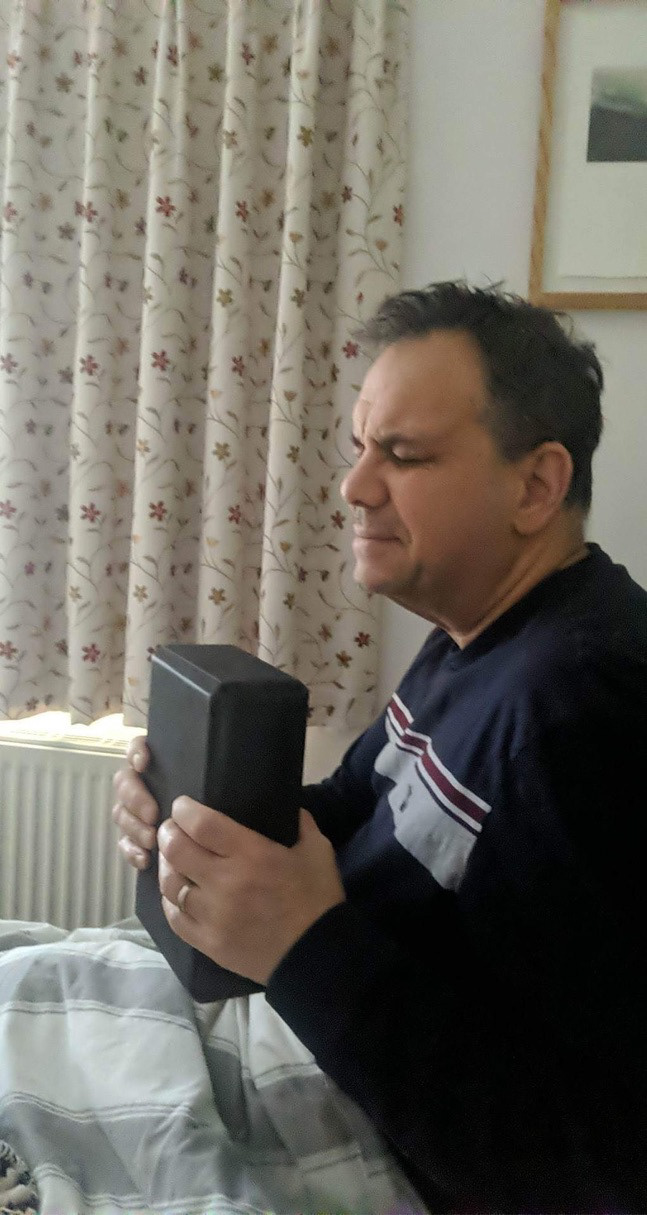
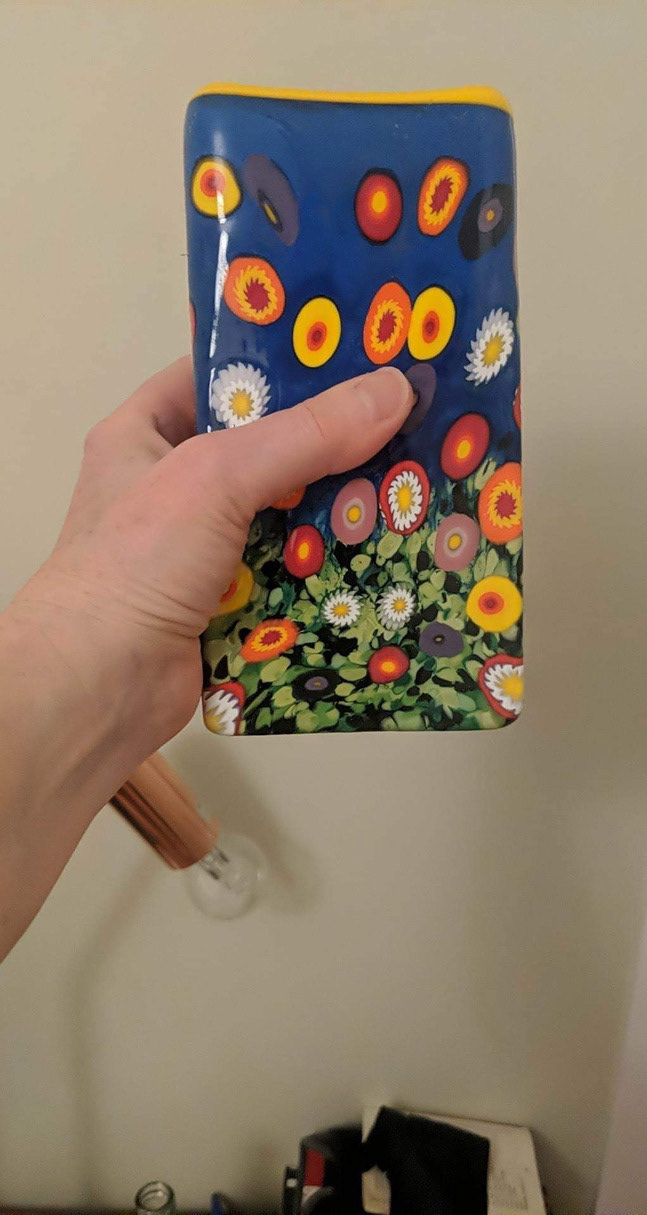
We also did a body storming exercise with two participants. We asked them to pick an object, and hold it for 5 seconds with their eyes closed when they were taking their pills. We did this to see if adding ritual to the process of medication would make it easier to remember.
They reported that this exercise helped them remember to take their pills, because just seeing the object triggered them to think about their medication.
Key Research Insights
Shame, irritation and impatience were the main feelings reported about medication.
Many users reported that they find it difficult to remember to take their medication.
Taking medication is a "mindless habit" according to most of the people we interviewed.
Ideation & Brainstorming
We began our concept generation phase by brainstorming, and putting all of our ideas onto post its. We then sorted these ideas onto different axes to find the most viable option.
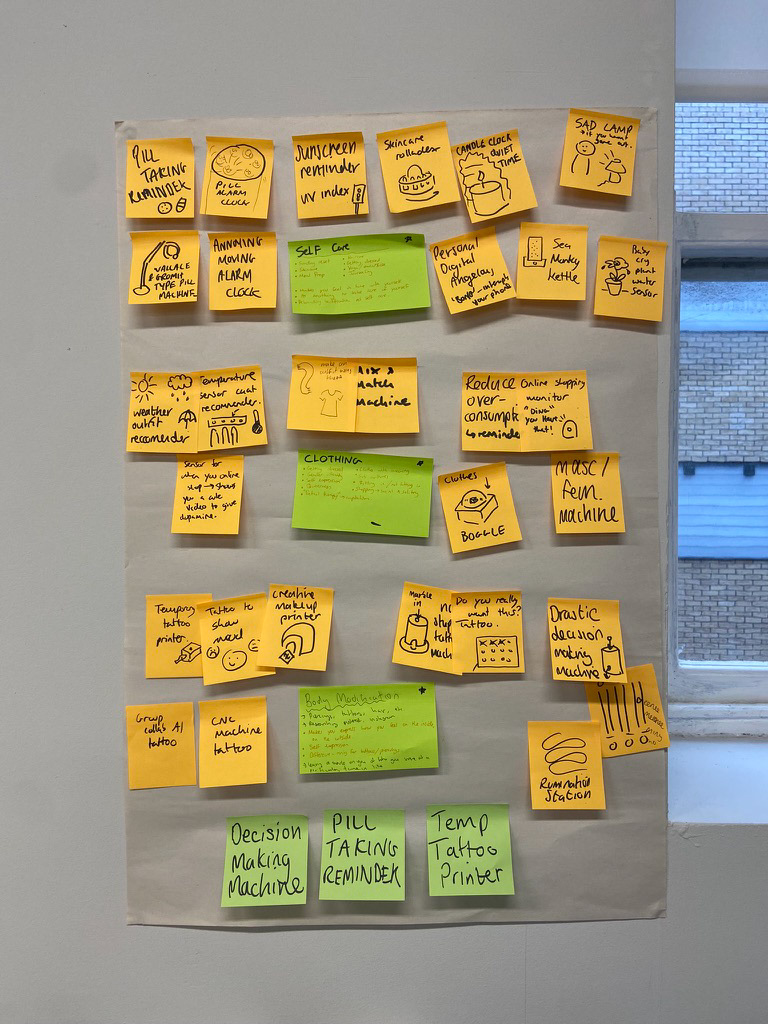


Crafting The Experience
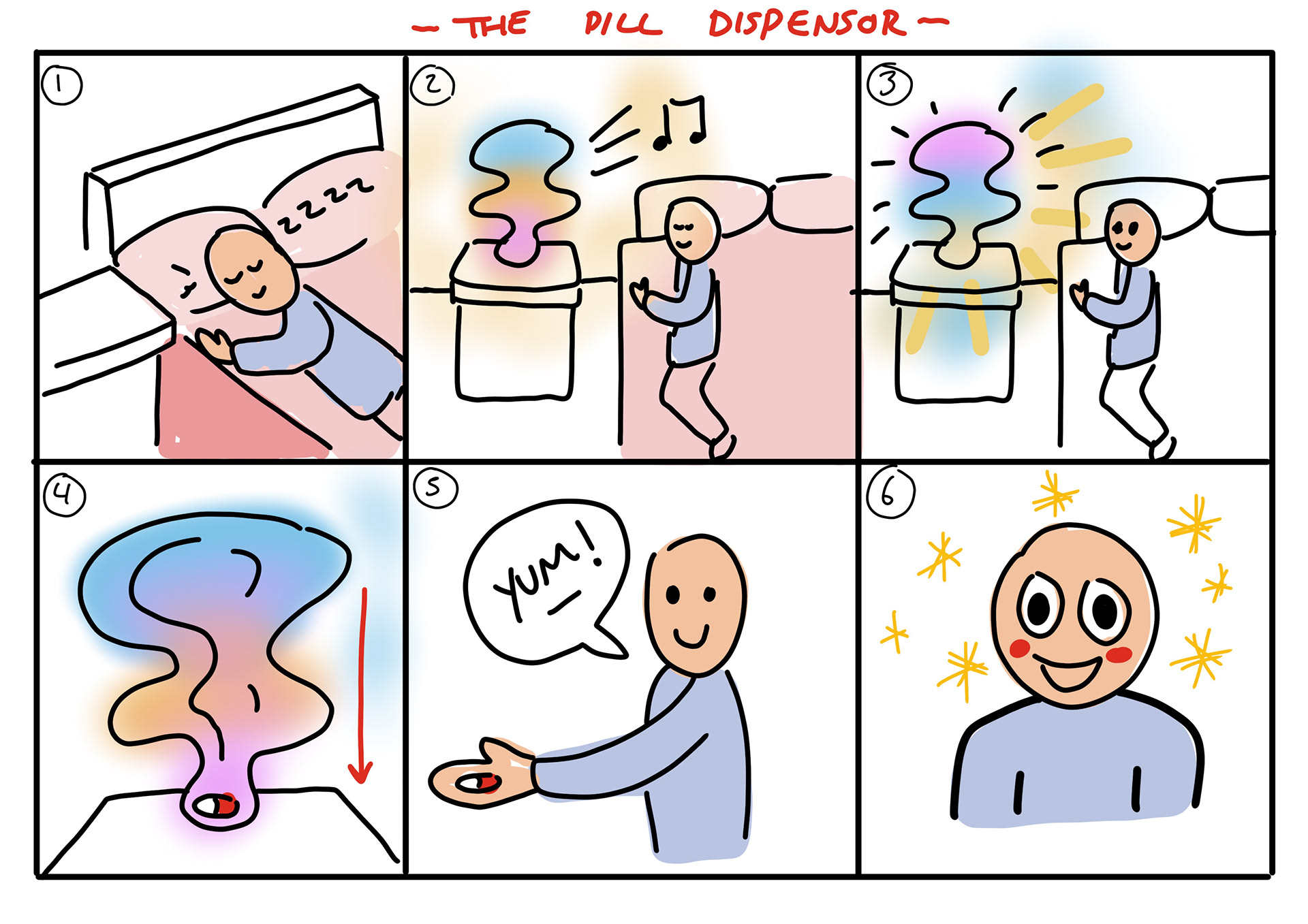
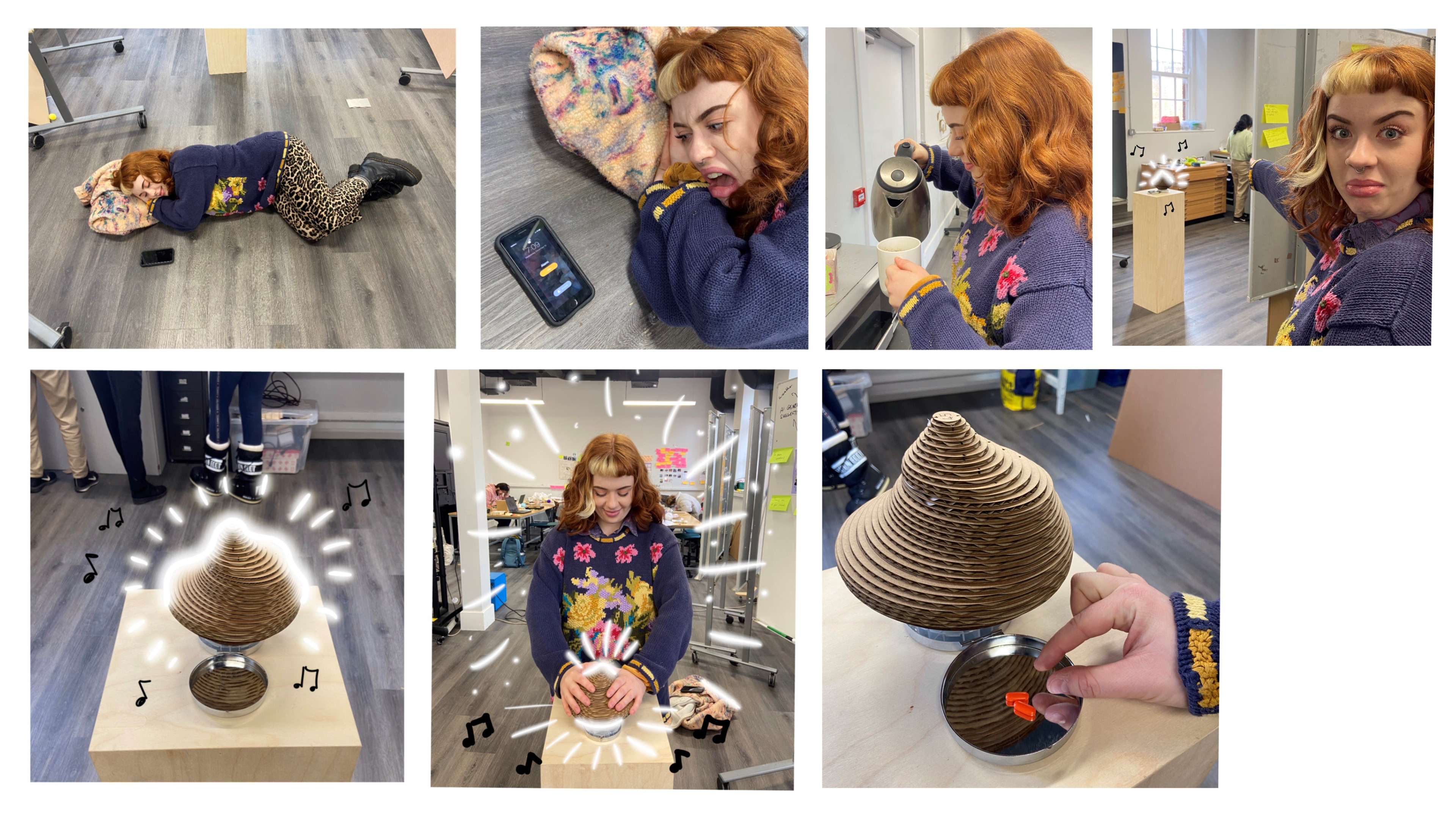
After a lot of ideation, we condensed our concepts down to one. Initially we imagined Pillin would sit on your bedside table and act as am alarm which ejects pills each morning. However by testing the experience we realized that we could bring more ritual into the interaction by using the element of touch and having the user place their hands on the object to trigger the release of their medication.
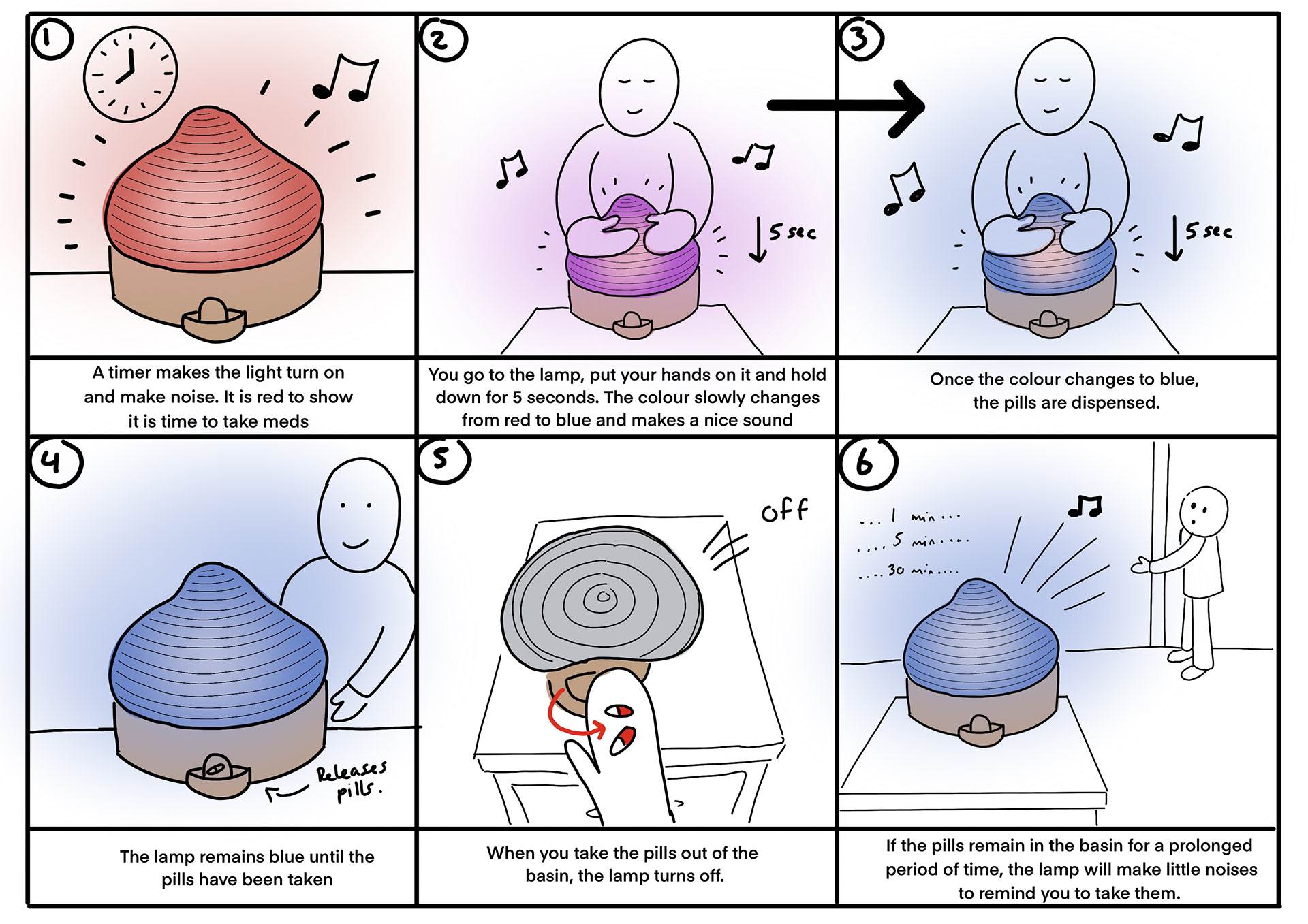

The final experience engages the senses of sound, touch and sight to create a meaningful and memorable daily ritual
Physical Prototyping- The Form
We started physically prototyping early on in the design process. We made cardboard models and experimented with clay to find an organic shape that felt right. Once we had picked our shape, we laser cut many circular layers of cardboard and stuck them together to make a three dimensional form.
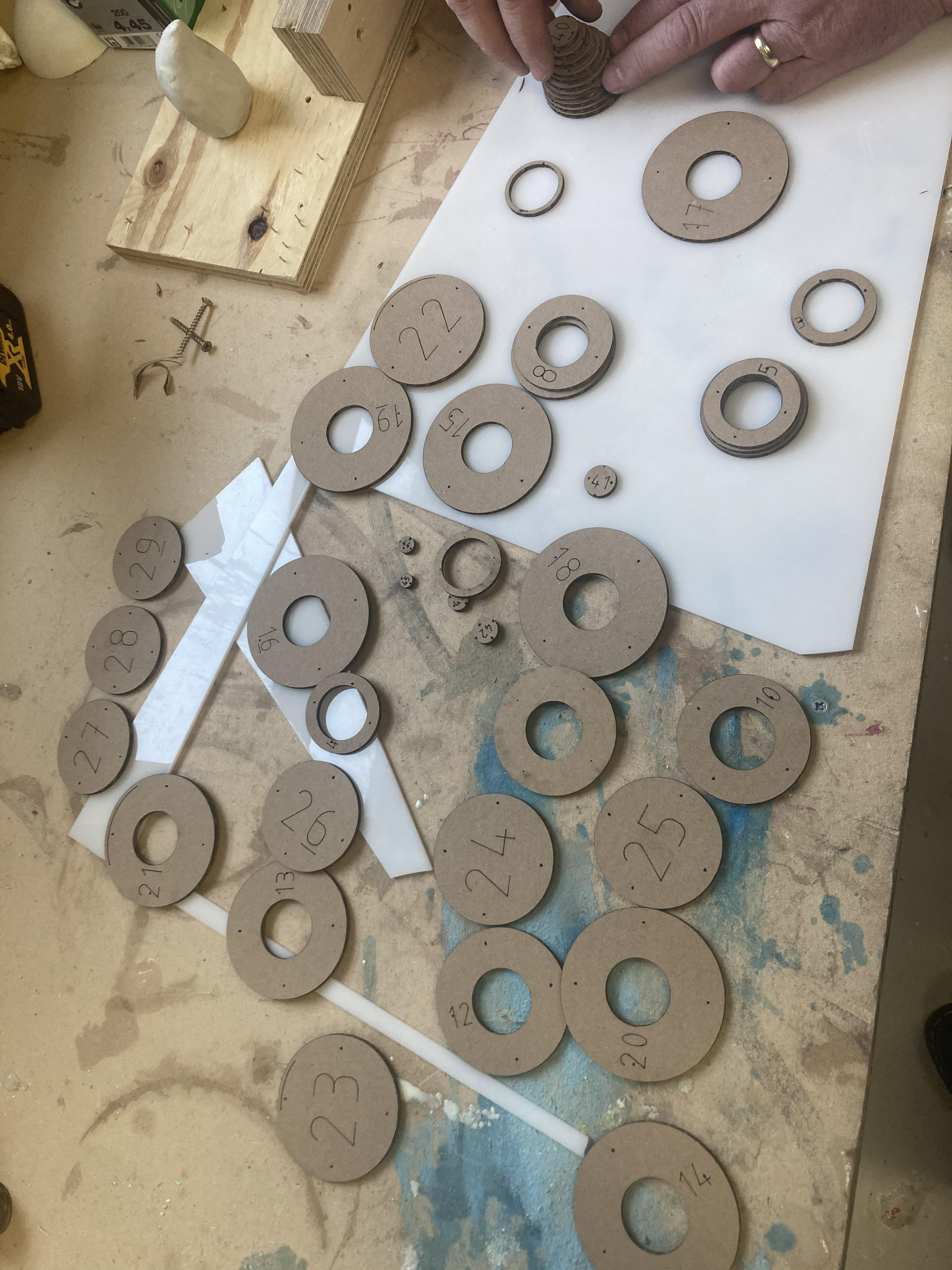


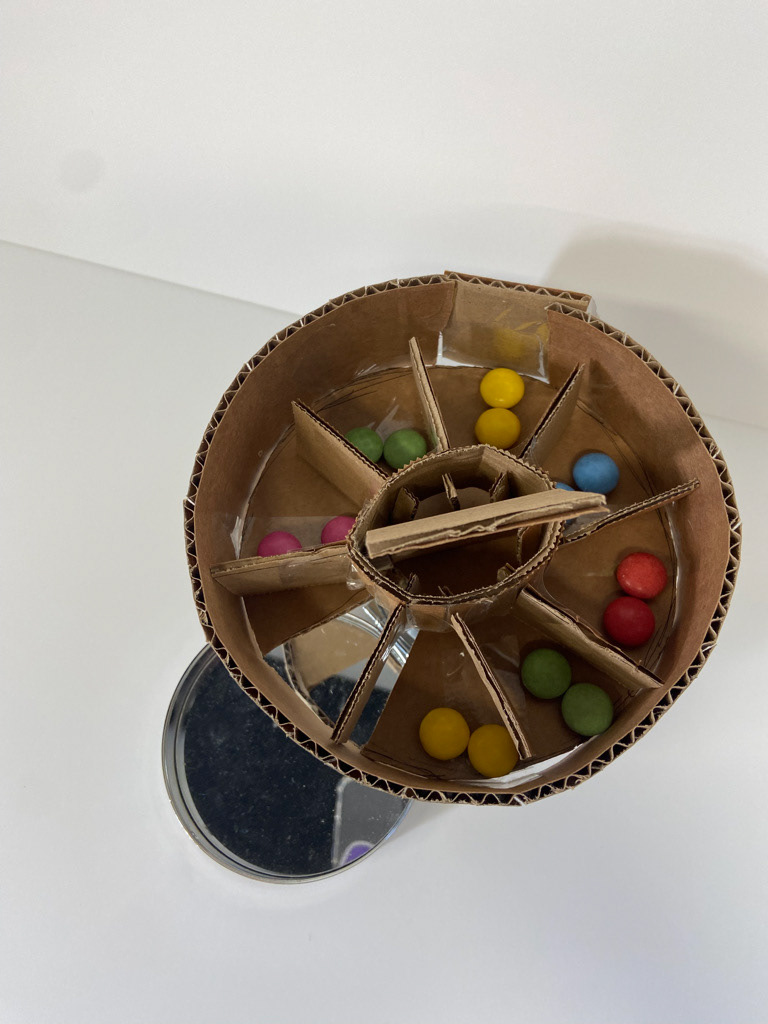
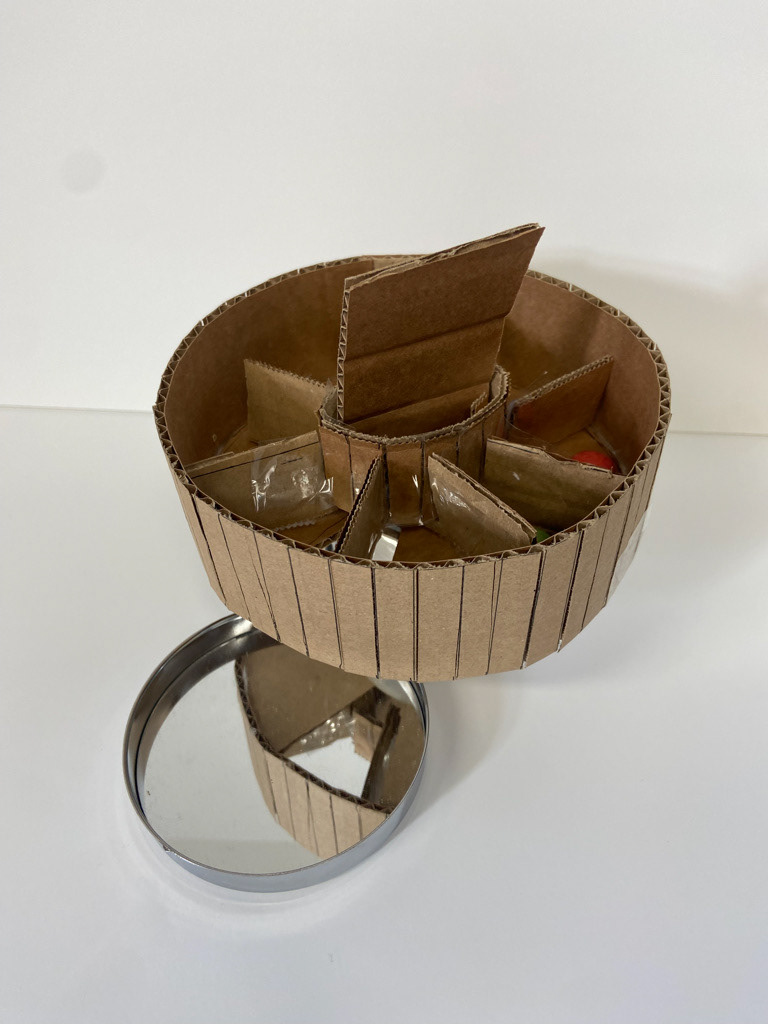

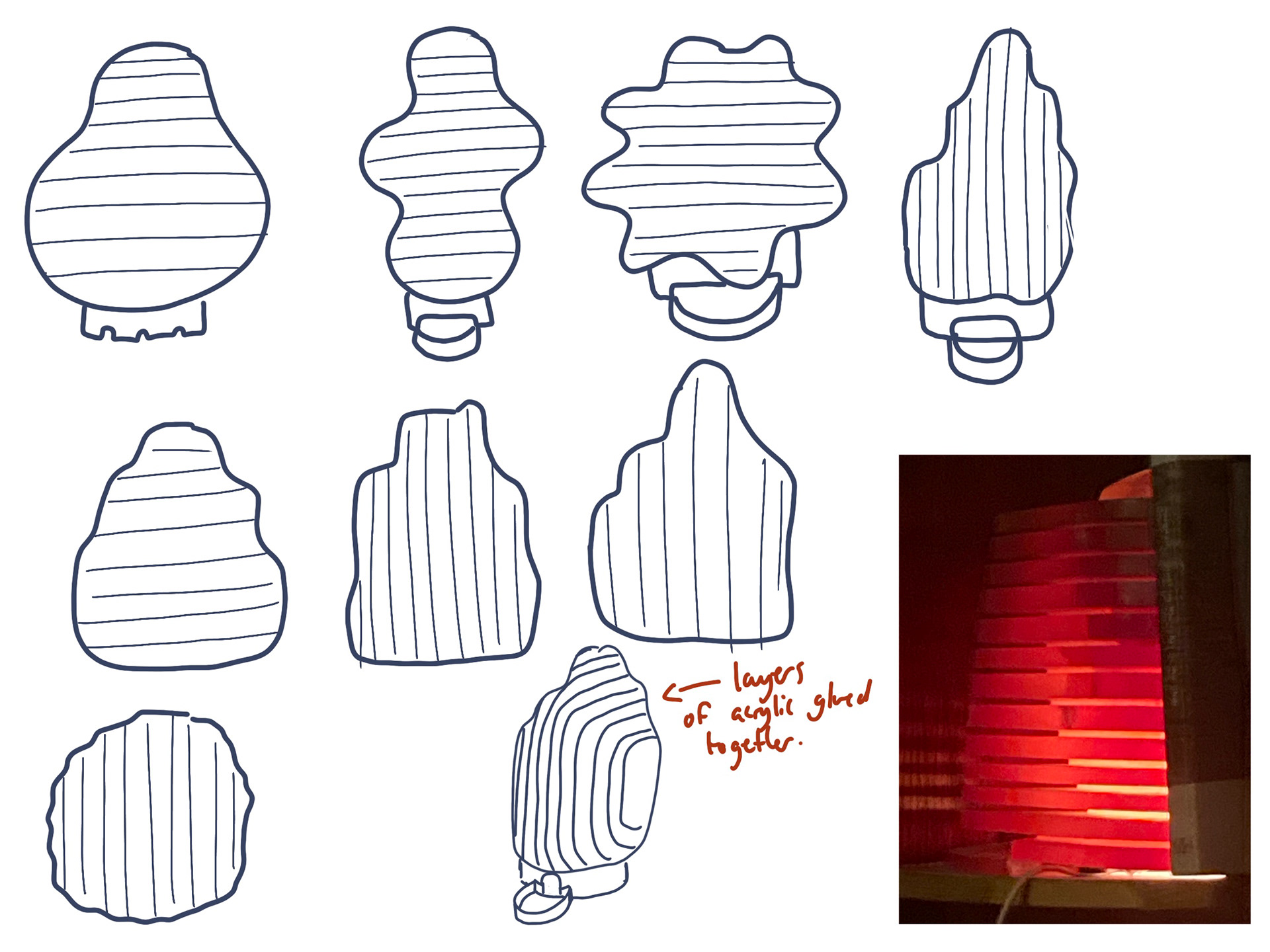
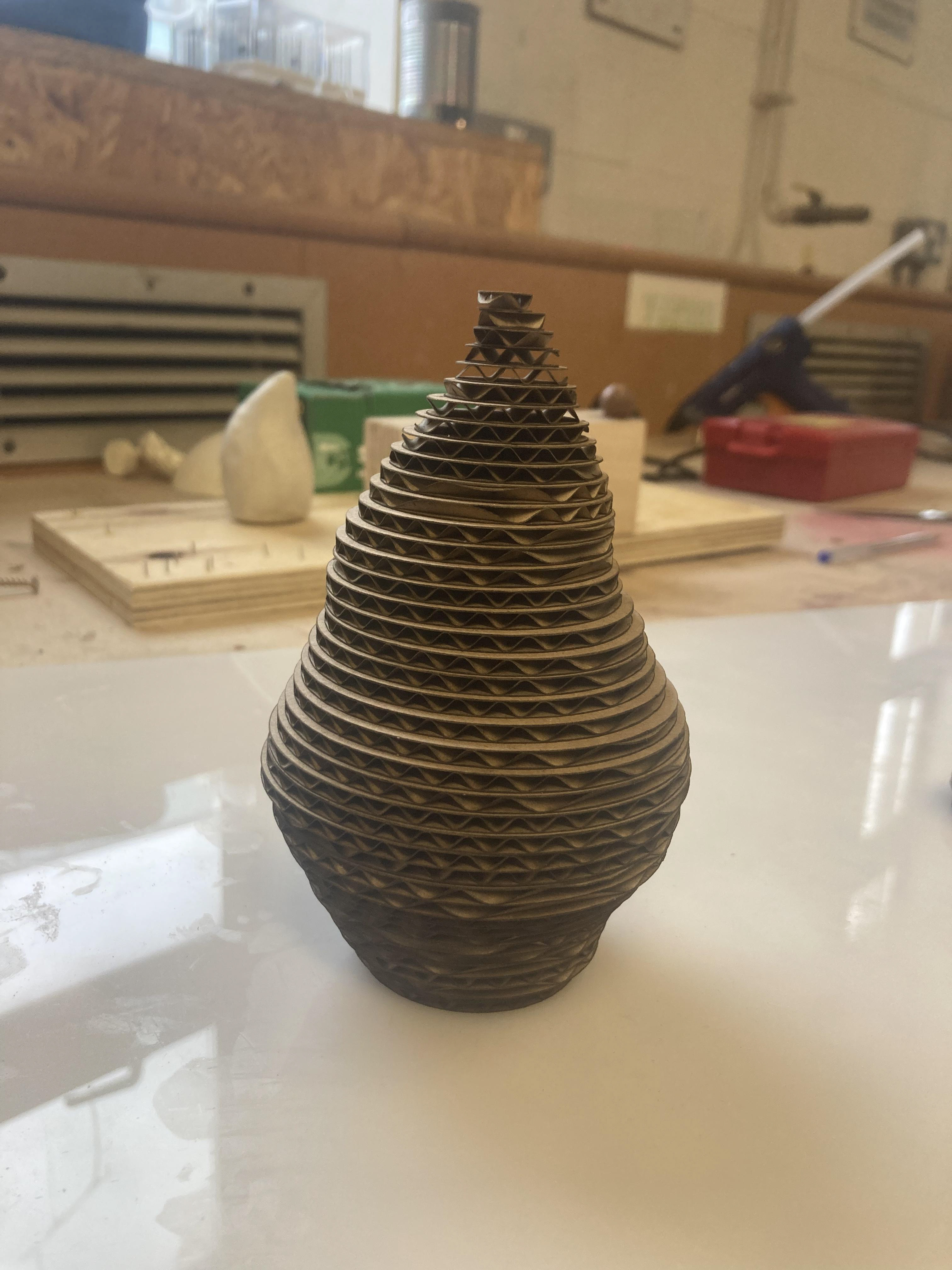
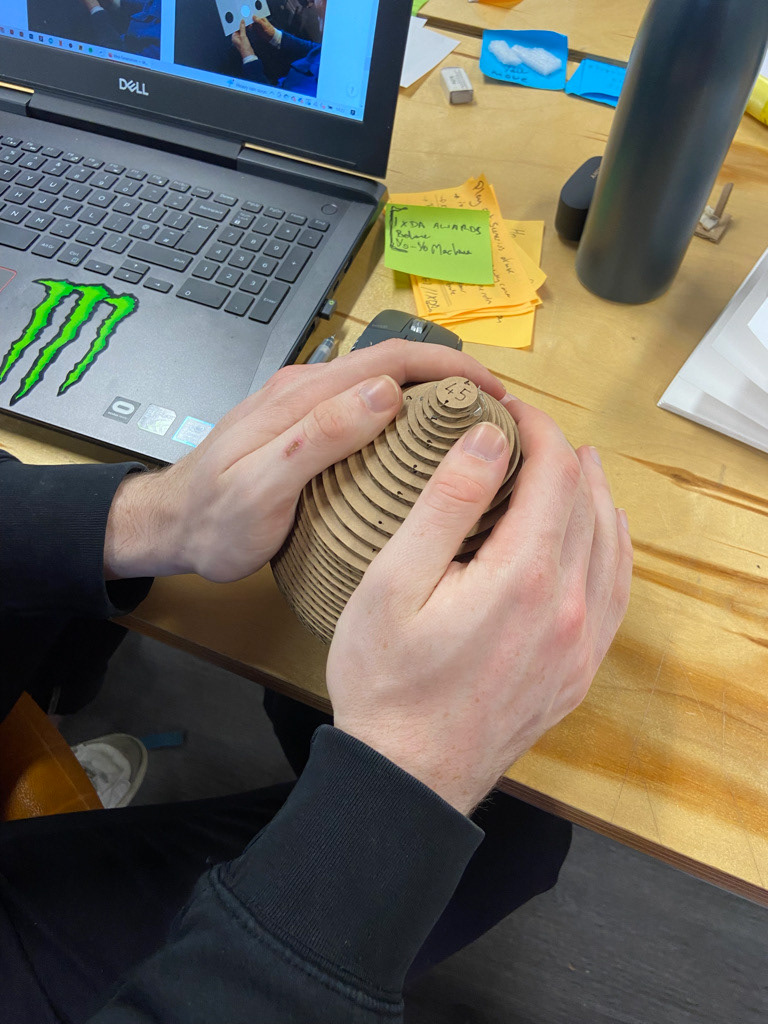
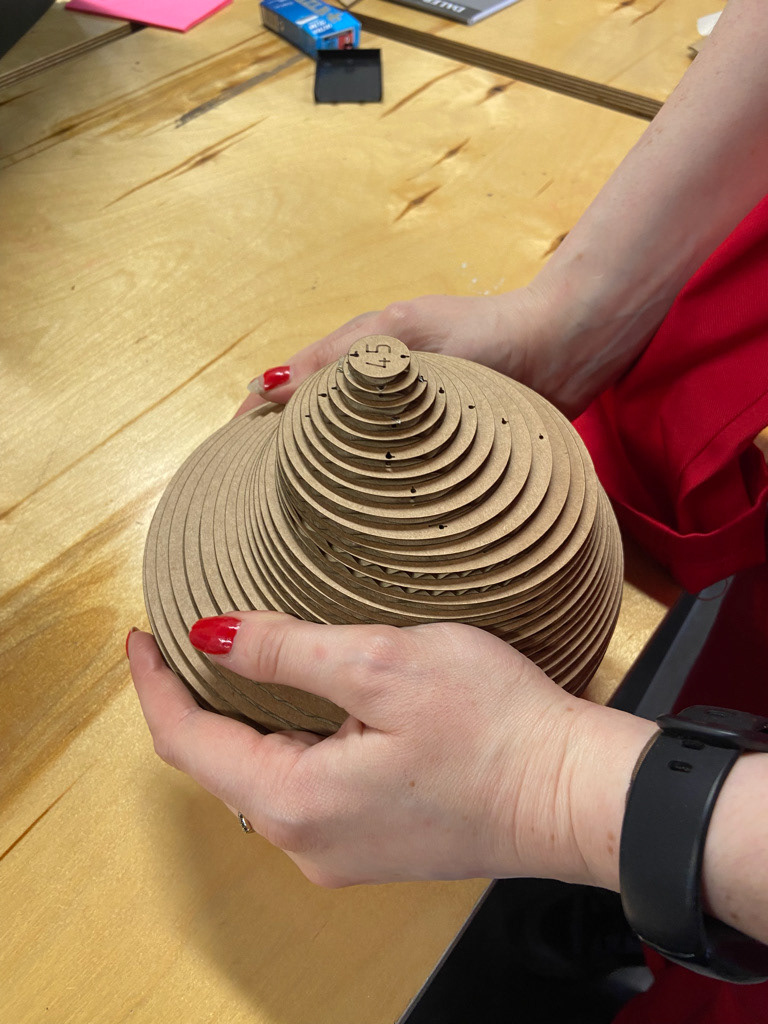
We made a few of these layered organic forms, and gave them to people to hold and test. Given the tactile nature of this project, how the objects feel in the hands was very important.
We then began experimenting with what material to use, and how it would look lit up. We decided that layers of clear acrylic stuck together and then sand blasted gave the desired effect.



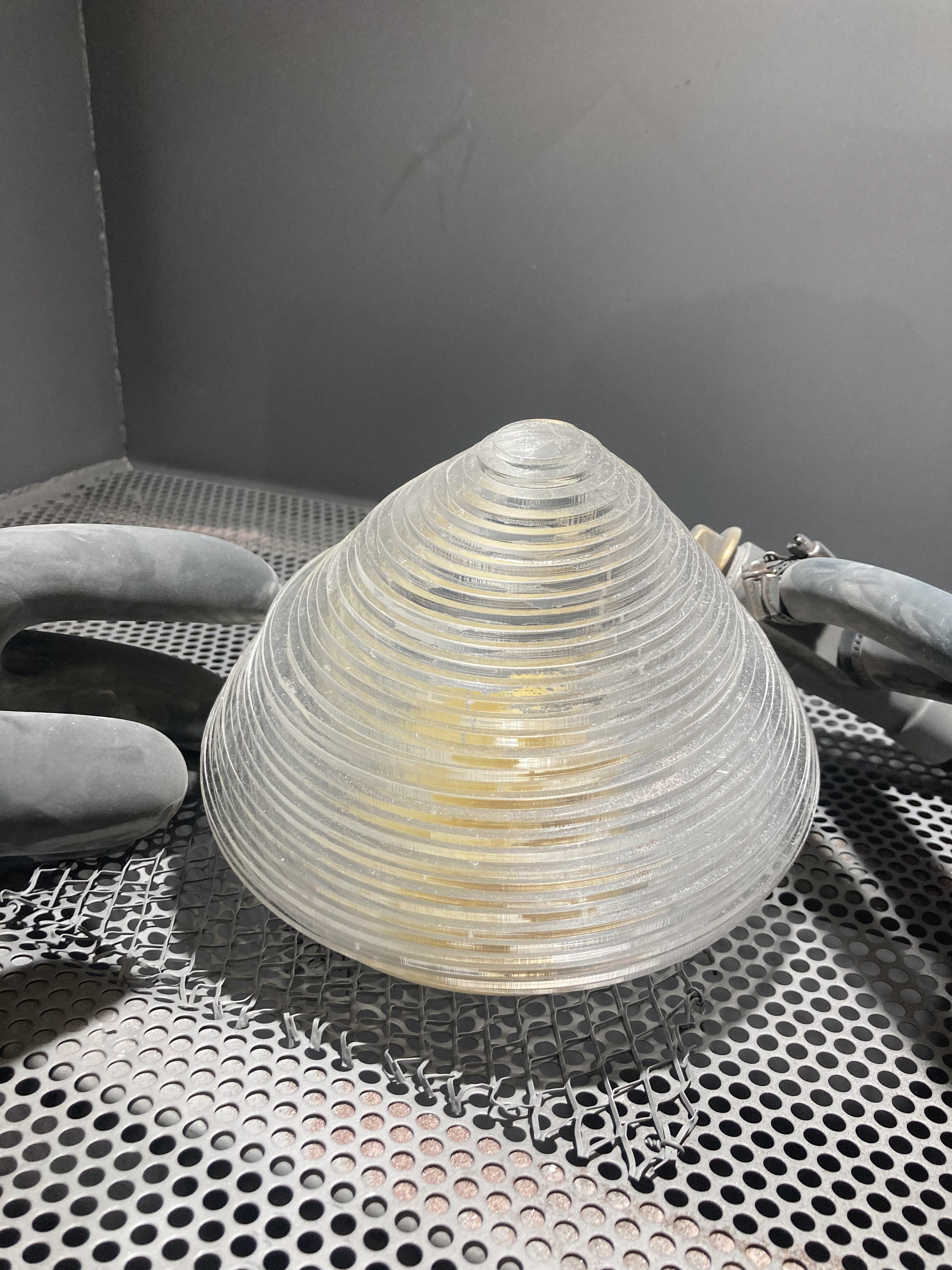
When we knew the size, shape and material we wanted, we laser cut the final shape out of acrylic.
Physical Prototyping- The Base
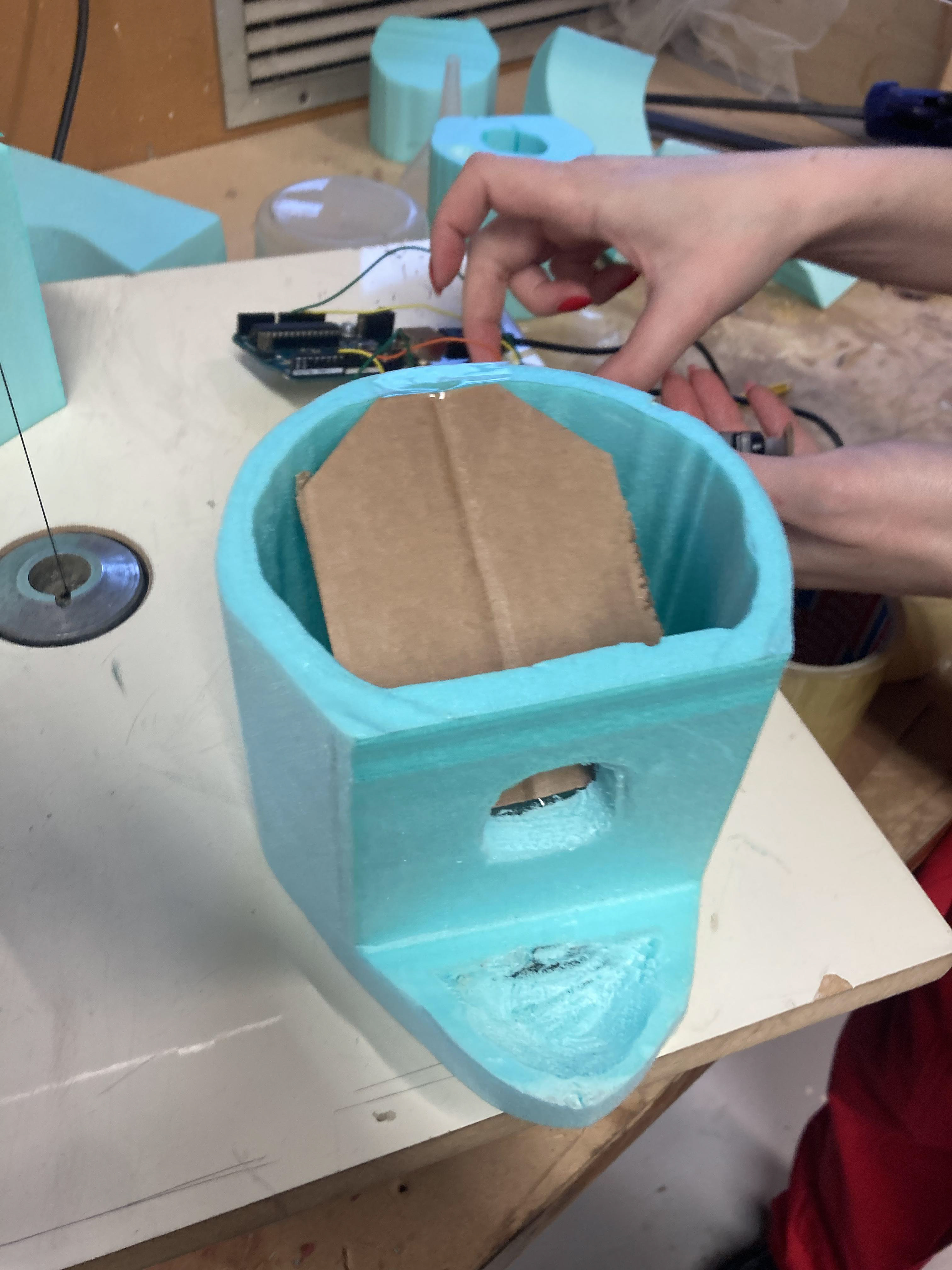
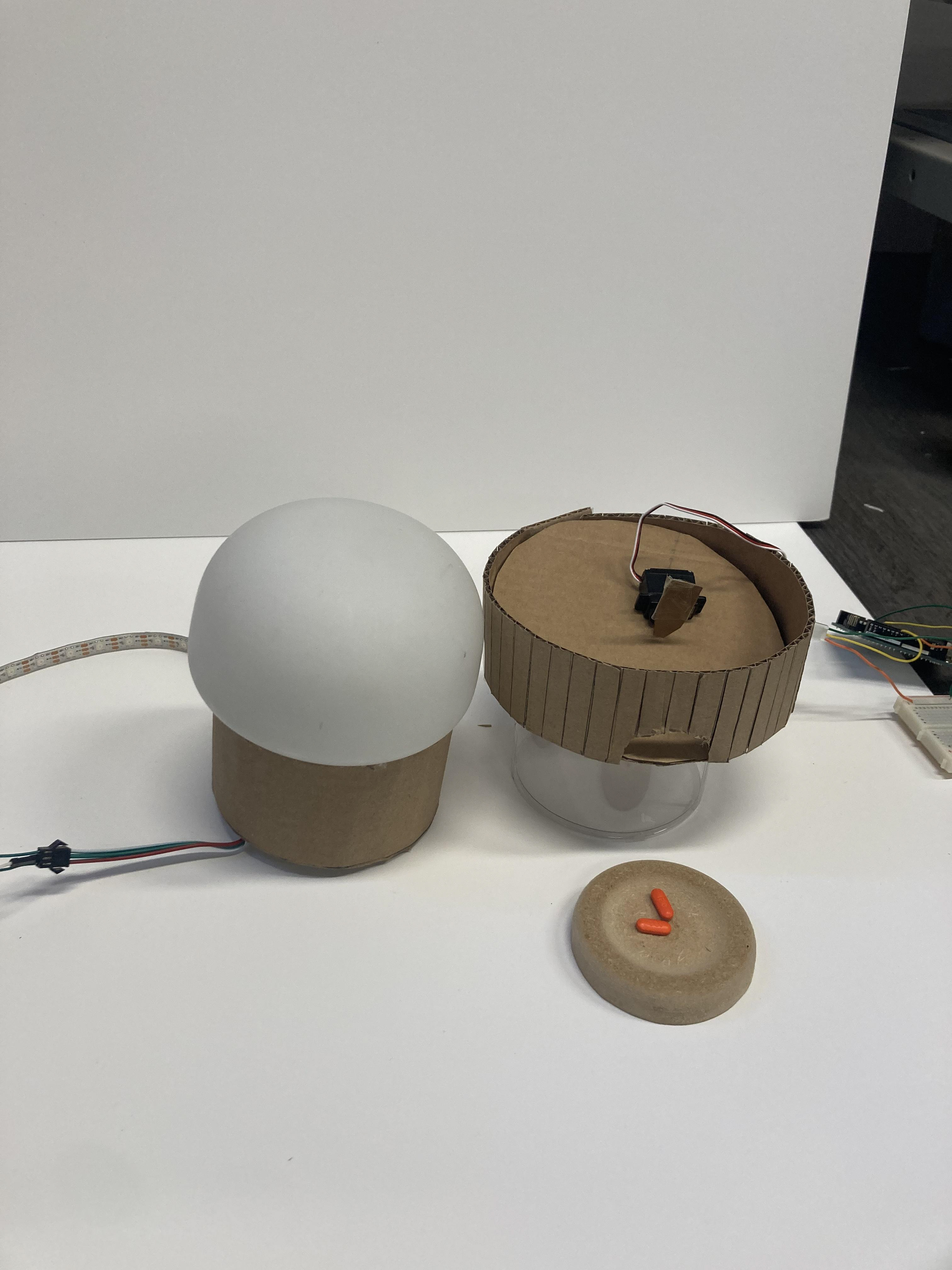
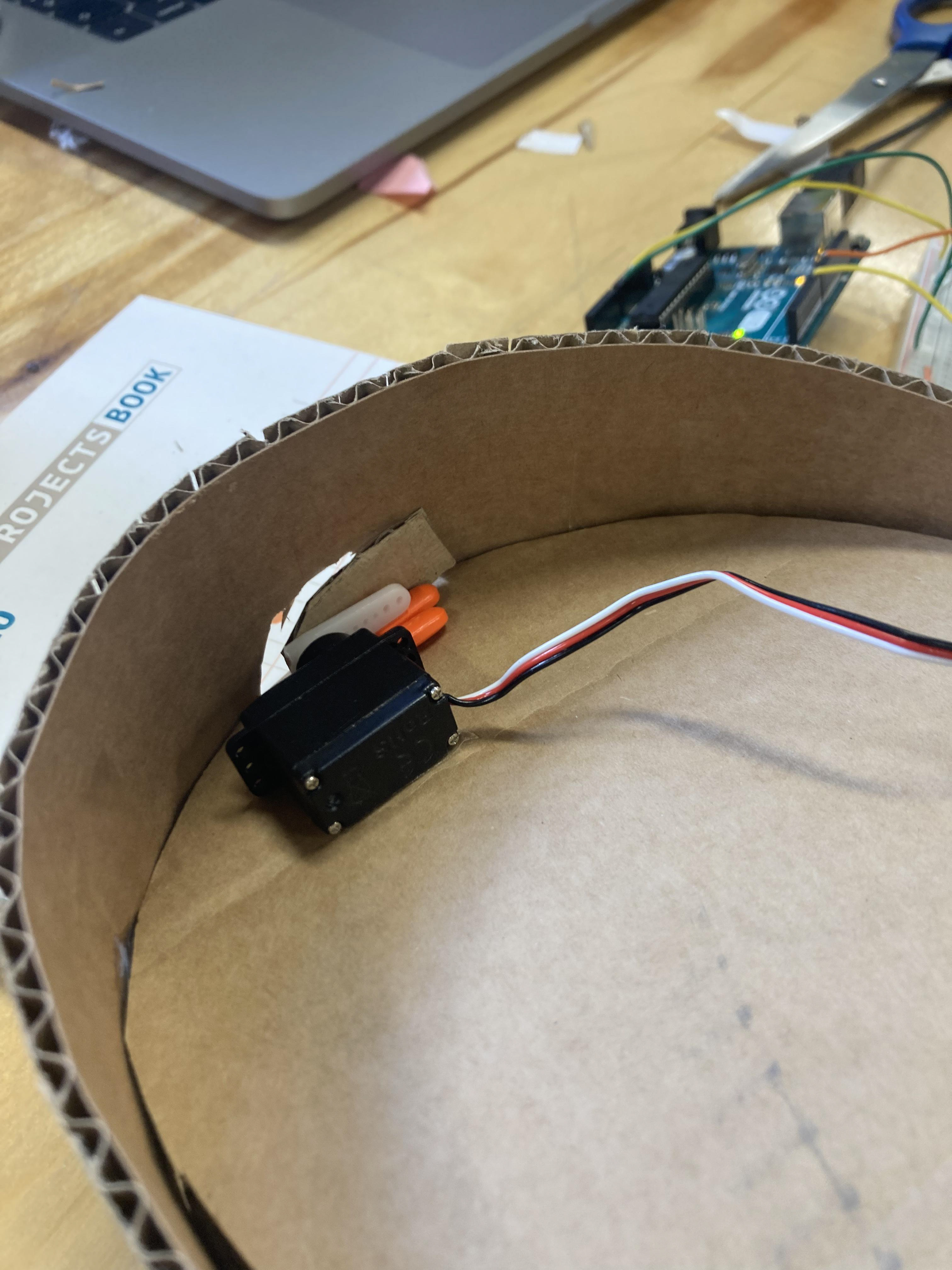
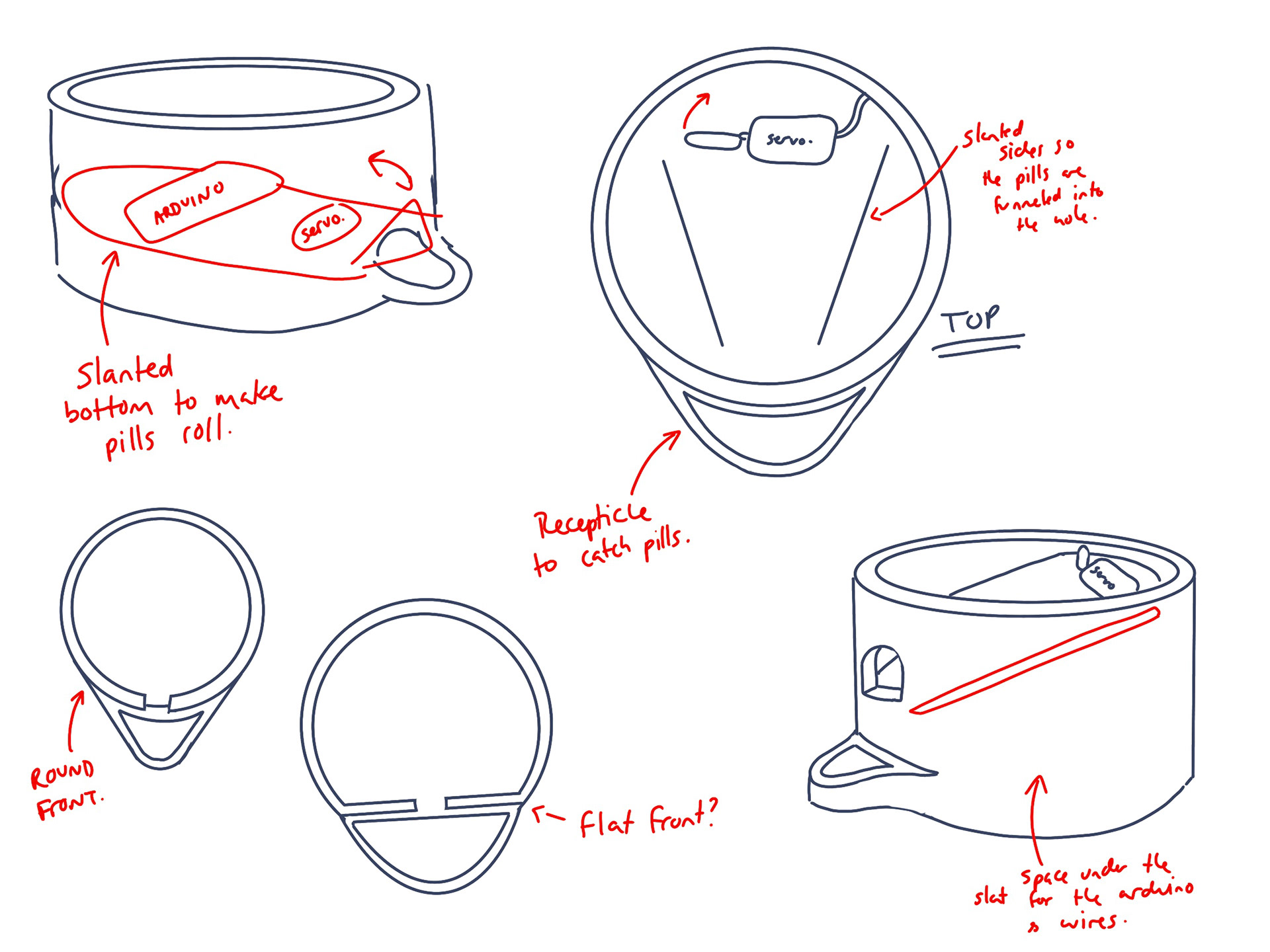
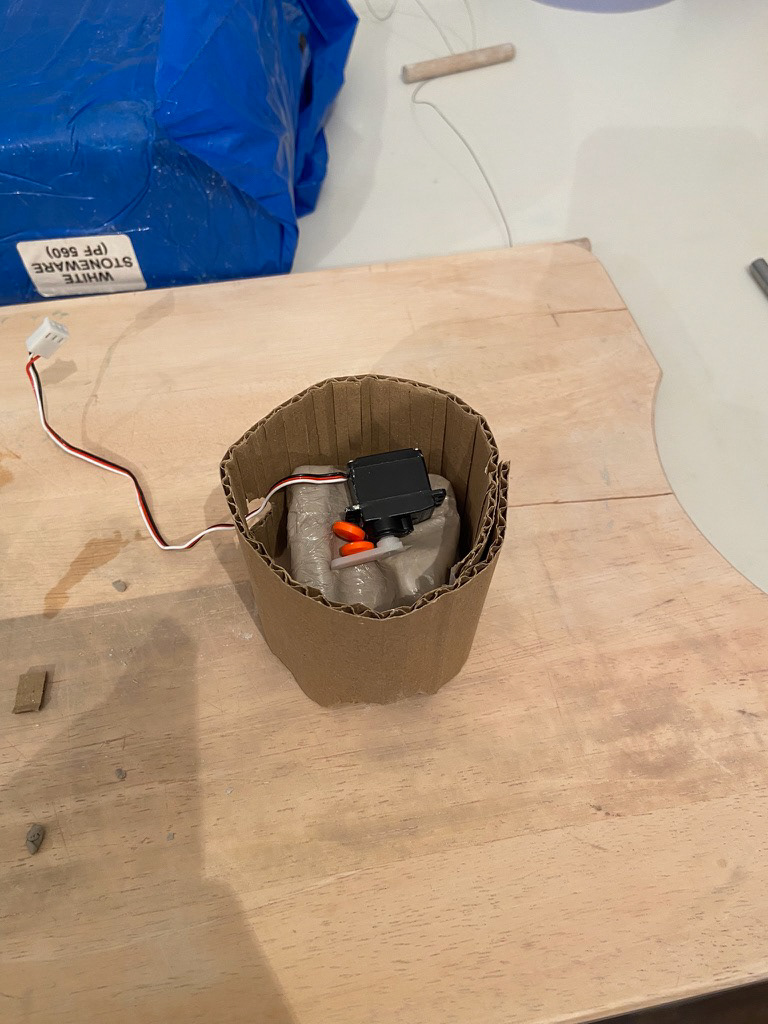
The base houses the pill release mechanism, which for the purpose of our final video, comprised of a servo motor sitting on an incline. When given the prompt by the Arduino, the servo releases the pills, and they roll down the slope and into the little dish attached to Pillin.


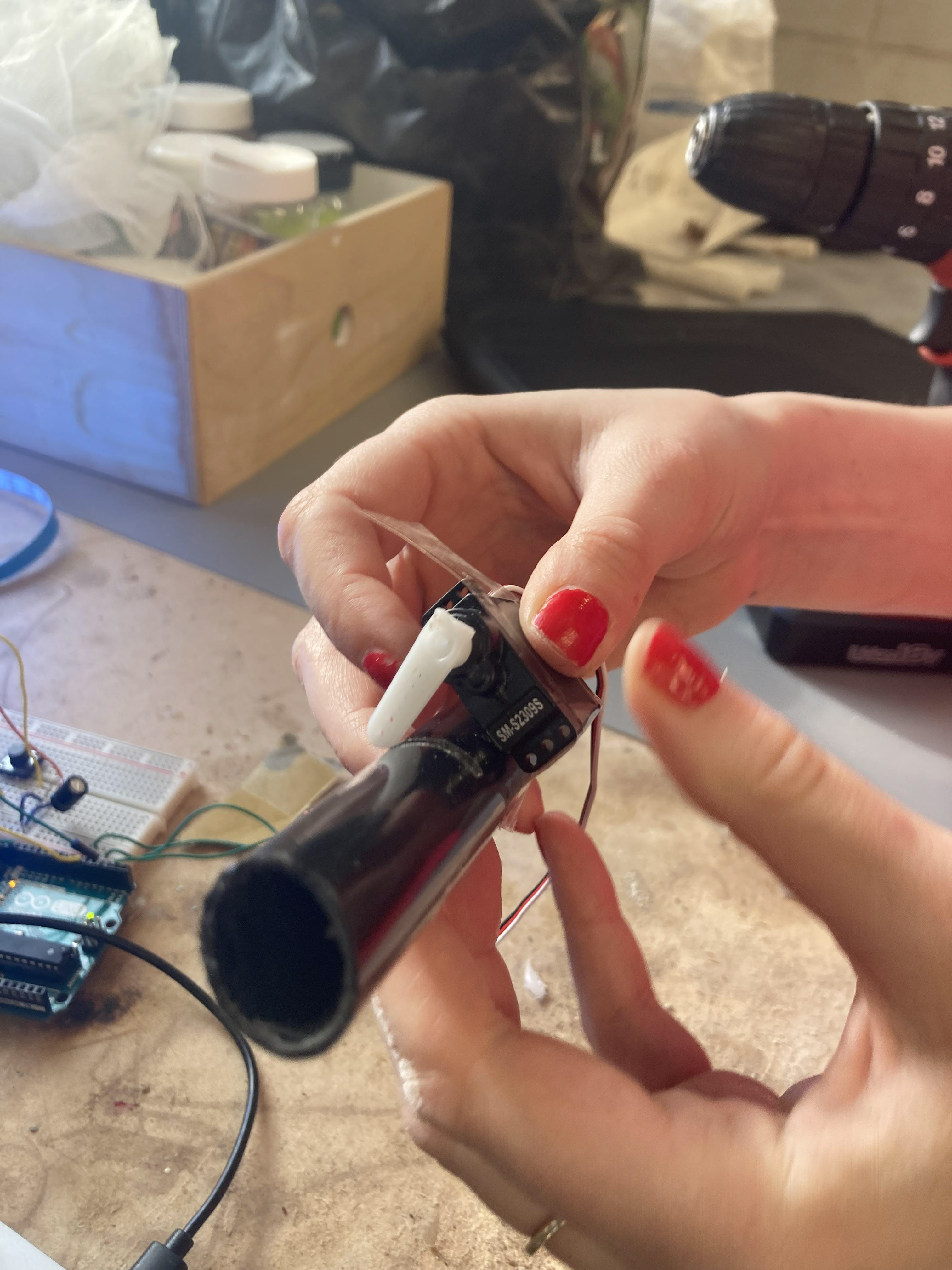

The Arduino Code
After a lot of trial and error, we got the code to work the way we wanted it to. The lights, servo motor and music were all in sync.
The Final Model
As you can see from the video above, the final model fully functioned. At a predetermined time, the light will turn on pink and a gentle alarm sound will play to alert the user it is time to take their pills. When the user places their hands on Pillin, the lights begin to change and a meditative sound is produced. This takes a few seconds, allowing the user to become present in the moment. After a few seconds, the pills are dispensed. The blue light will stay on until the pills are removed from the bowl.

